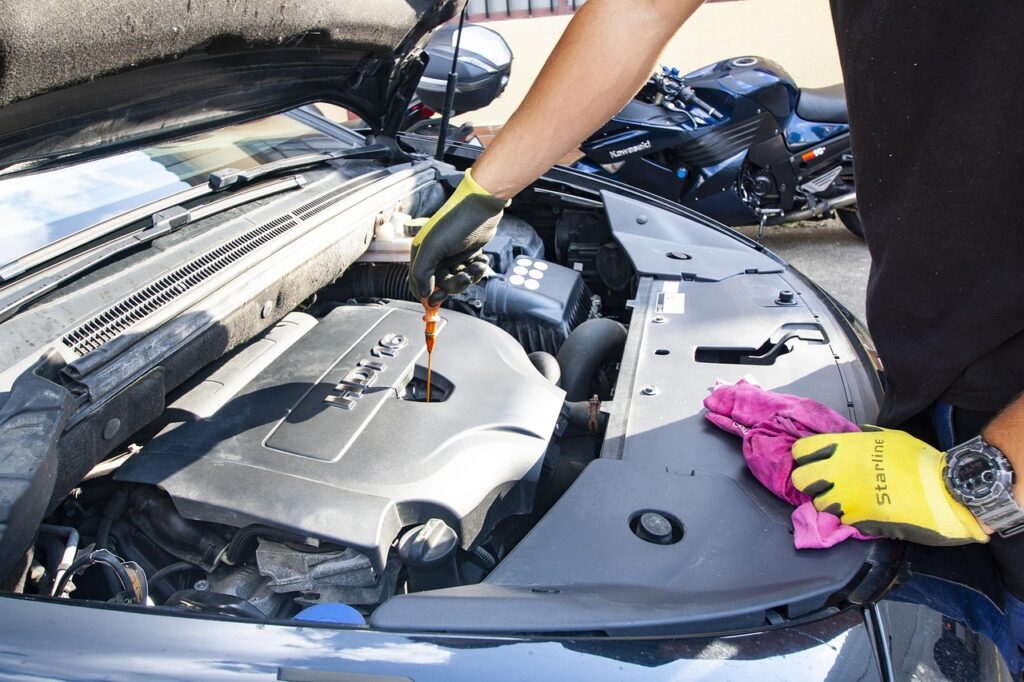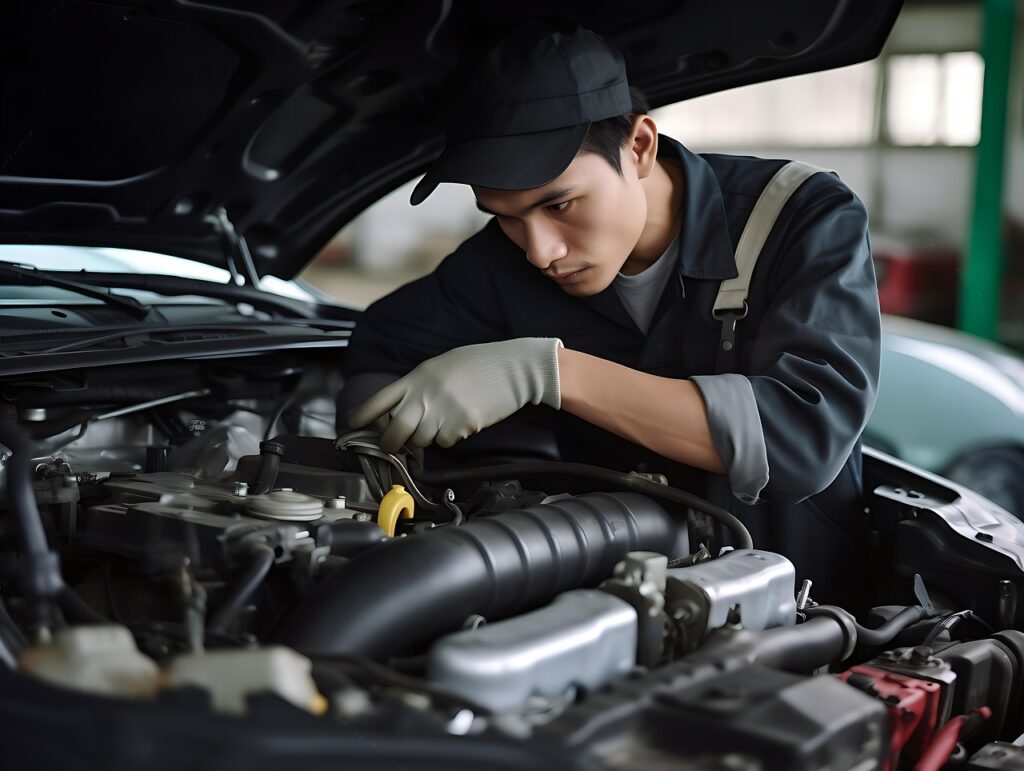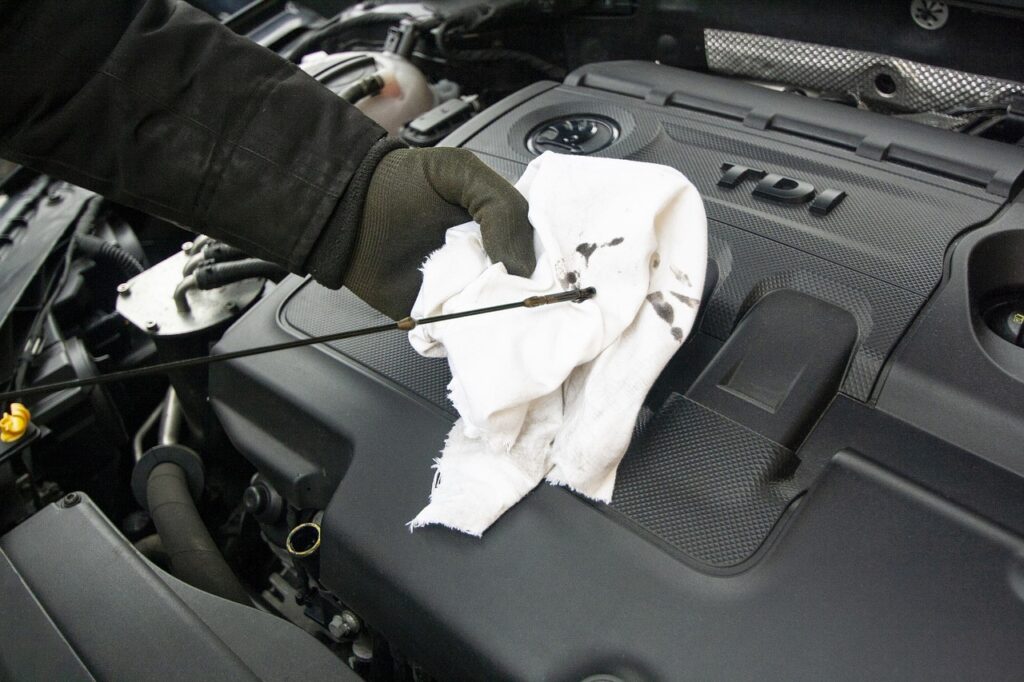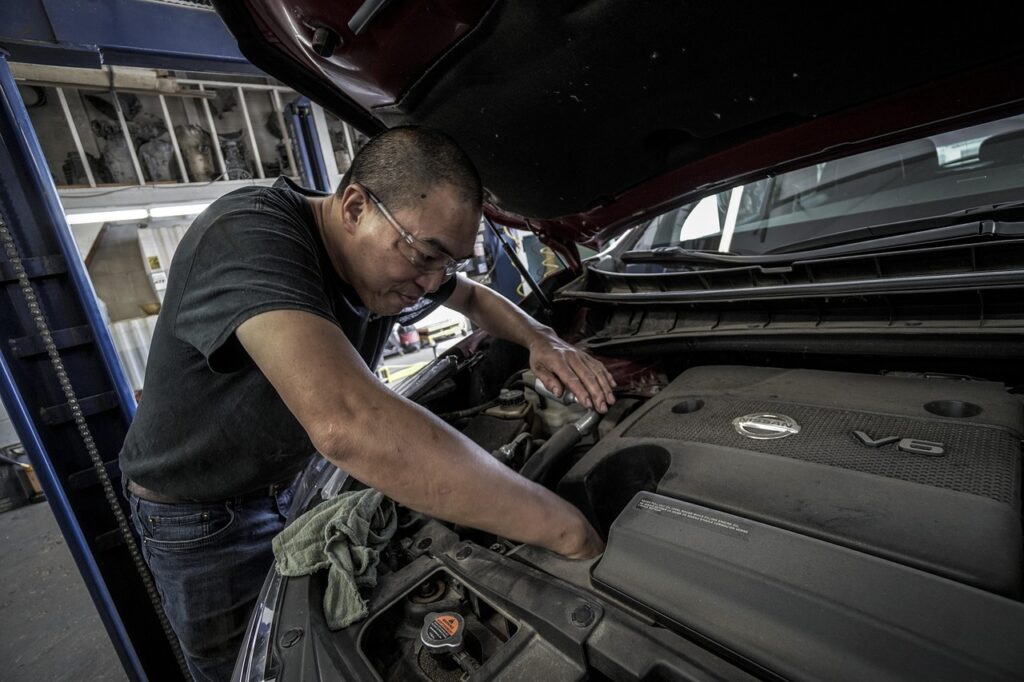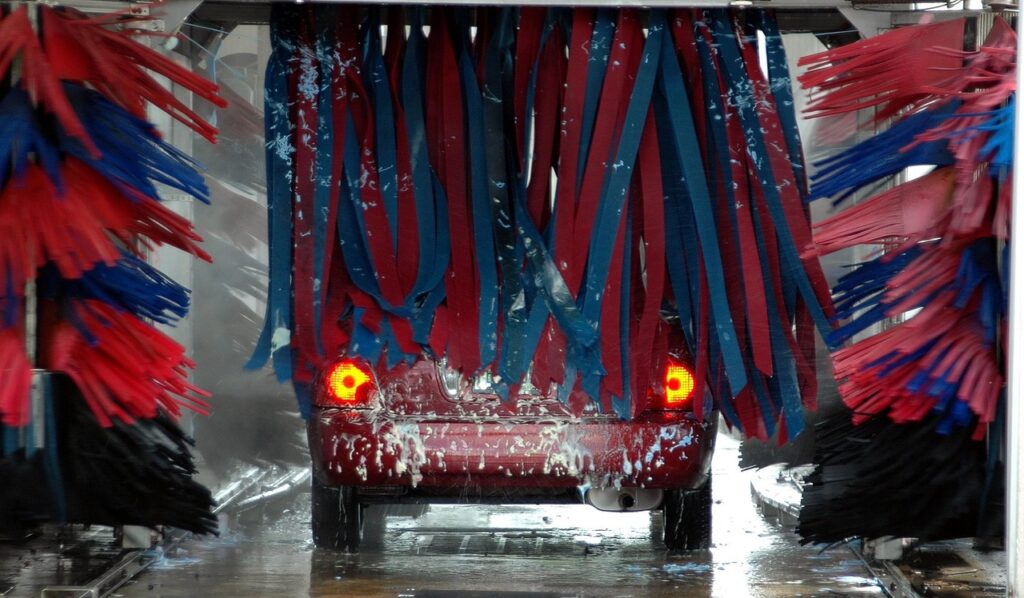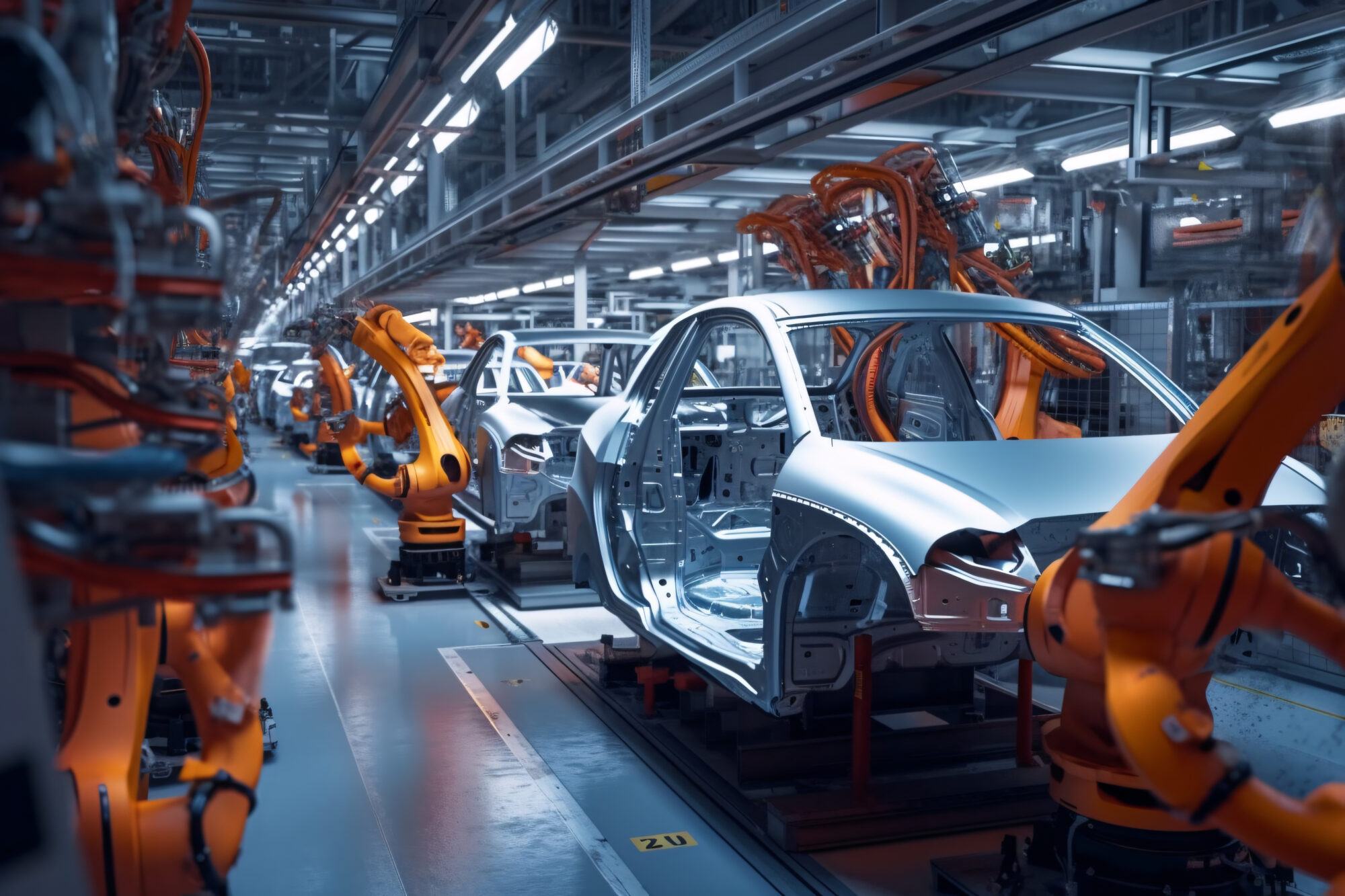
Buying a car, especially for the first time, often comes with an overwhelming flood of advice from every direction—family, friends, and colleagues all have their well-meaning tips and tricks. While some of this guidance can be incredibly helpful in keeping your vehicle running smoothly, a significant portion of what’s passed around as automotive wisdom is, in fact, outdated, incorrect, or simply a myth. Following bad advice, unfortunately, doesn’t just potentially affect your car’s overall lifespan; it can also lead to hefty, unnecessary bills down the line, or worse, compromise your safety on the road.
The challenge for many drivers is discerning which pieces of advice are genuinely worth heeding and which should be discarded. What might be suitable for one person’s driving habits or car model might be entirely unhelpful, or even detrimental, for another. However, there are some commonly held beliefs about car maintenance that are almost always worth ignoring. These widespread myths not only lighten your wallet but have no beneficial effect on your car’s performance or longevity, underscoring the importance of informed decision-making.
In the spirit of empowering every car owner to make the most informed choices for their vehicle, we’re embarking on an in-depth journey to dismantle some of the most persistent and costly car maintenance myths. Drawing on expert insights and practical realities, we aim to provide clear, actionable information that helps you separate fact from fiction. Our goal is to ensure your car stays in top shape, you save money, and you gain confidence in managing your vehicle’s needs without falling victim to misconceptions.
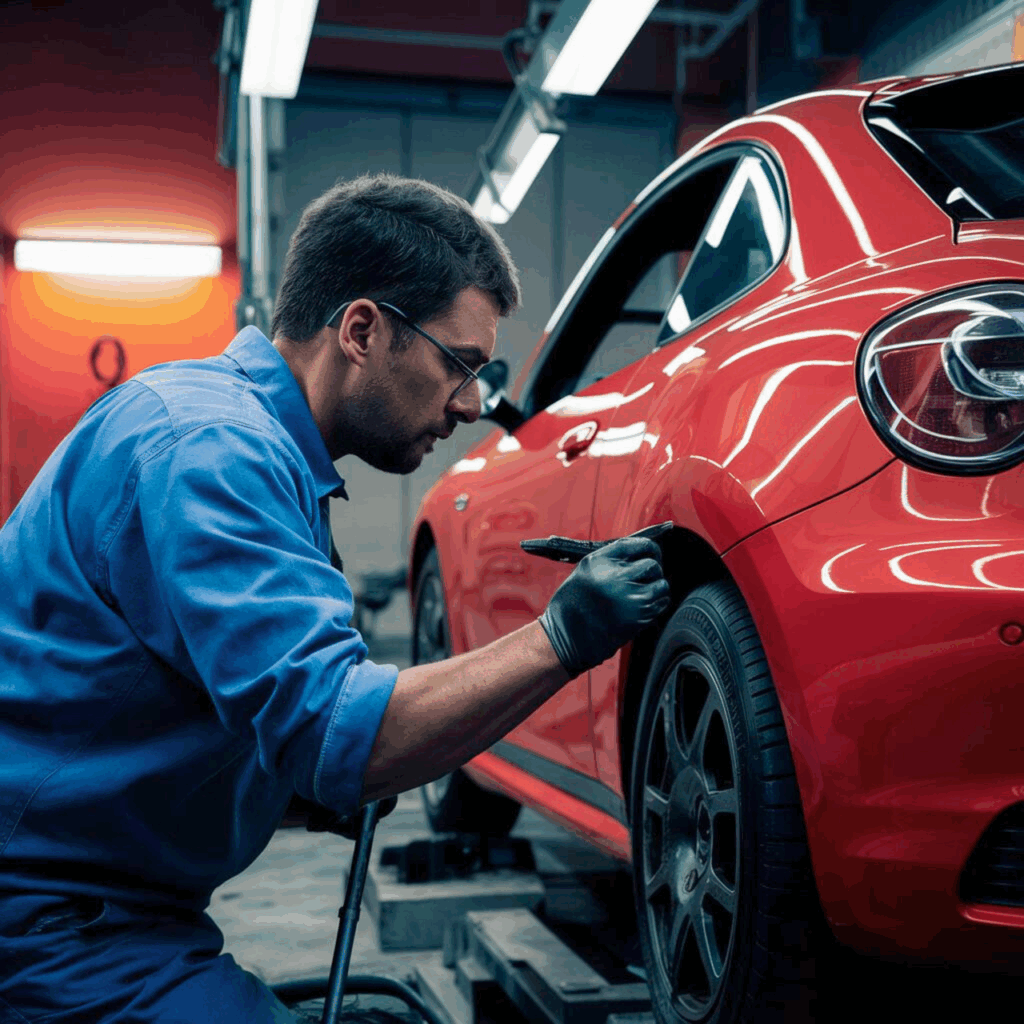
1. **Myth: You can rotate all tires in any pattern.**It’s a common understanding that rotating tires helps prolong their life by ensuring more even wear across all four. This is absolutely true, with Michelin recommending rotations every 6,000-8,000 miles, which for the average American driver translates to roughly once every six months. The issue arises, however, when drivers assume that all tires can be rotated interchangeably to any corner of the car, overlooking crucial details about tire design.
The reality is that not all tires are created equal, especially concerning their tread patterns. Some tires feature symmetrical patterns, offering the flexibility to be rotated to any position, provided front and rear tires are the same size. However, many contemporary tires feature asymmetric or directional patterns, specifically engineered for optimal performance when mounted and rotated in a certain way. These specialized tires will have an arrow on the sidewall displaying their direction of rotation and one sidewall labeled as “outside.”
For asymmetric or directional tires, rotations are generally limited to lateral movements—from front to rear on the same side of the car. Swapping them from left to right would cause them to run incorrectly, significantly impacting their designed performance. Incorrect rotation can compromise grip, accelerate uneven wear, and affect handling. If you’re ever in doubt about the correct pattern, consult your vehicle’s owner’s manual or a professional shop to ensure optimal performance and lifespan.

2. **Myth: You need to change your oil every 3,000 miles.**For decades, the mantra of changing your car’s oil every 3,000 miles was ingrained in drivers’ minds, but this advice is largely outdated for most modern cars. Sticking to this frequent interval with a newer vehicle can lead to unnecessary expenses without providing additional benefit. Modern engine oils, particularly synthetic and synthetic-blend varieties, contain advanced lubricants and additives designed to last significantly longer.
Most car manufacturers now recommend oil change intervals ranging from 7,500 to 10,000 miles, and sometimes up to 15,000 miles for full-synthetic oil. The best and most authoritative source for your car’s specific oil change schedule is always its owner’s manual. A recent AAA survey found that 45% of people still believe in the 3,000-mile myth, highlighting its persistence.
While changing your oil more frequently won’t harm your engine, it will certainly lighten your wallet more often than needed. However, certain severe driving conditions—like frequent short trips where the engine doesn’t reach optimal temperature, or driving in dusty environments—might warrant slightly more frequent changes. For the average driver, adhering to the manufacturer’s schedule, typically between 5,000 and 7,500 miles for cars 15 years or newer, is the most practical and cost-effective approach.
3. **Myth: Tire pressures don’t matter as long as they’re inflated/match sidewall.**It’s a common and visually deceptive assumption: if a tire *looks* properly inflated, it *must* be correctly inflated. This couldn’t be further from the truth. The visual appearance of a tire can be highly misleading, which is why regular checks of tire pressure are critically important. The NHTSA once estimated that nearly 28% of American drivers are unknowingly driving with at least one underinflated tire, illustrating how prevalent this issue is.
Another significant misconception is that the correct tire pressure is the number printed on the tire’s sidewall. This figure represents the *maximum* pressure the tire can safely handle, not the optimal or recommended pressure for your specific vehicle. Using this maximum can lead to overinflation, resulting in a harsher ride, reduced traction, and uneven wear down the center of the tread. Underinflation, conversely, generates excessive heat, worsens fuel economy, and can lead to dangerous blowouts.
The *actual* correct tire pressure for your car is found in your vehicle’s owner’s manual, or often on a sticker inside the driver’s door jamb or fuel cap. Many cars provide two recommended pressures: one for an unloaded vehicle and another for a fully loaded one. Adjusting pressures accordingly, based on load and driving conditions, is essential for maximizing tire life, ensuring optimal handling, and improving fuel economy. Proper inflation is a fundamental aspect of vehicle safety and efficiency.

4. **Myth: You can use dish soap to wash a car.**In an effort to save a few dollars, or when specialized car wash soap isn’t available, it might seem like a clever hack to substitute it with ordinary dish soap. This widely circulated myth, however, is a classic example of a shortcut that can lead to more harm than good, ultimately costing you more in the long run. Dish soap is formulated to be highly effective at stripping away oils and residues, which is great for dishes but detrimental to your car’s finish.
Using dish soap aggressively strips away the protective wax coating that is vital for your car’s paintwork. This wax layer acts as a crucial barrier against environmental contaminants, UV rays, and minor abrasions, keeping your paint glossy and preventing premature wear and tear. Once this wax is removed, your car’s paintwork becomes significantly more vulnerable to oxidation, fading, and damage from elements like dirt and tree sap.
While you *could* technically reapply wax more frequently, that process adds time, effort, and the cost of additional wax products, negating any initial savings. If you are genuinely concerned about maintaining your car’s appearance and protecting its paintwork over the long term, investing in proper, car-specific cleaning agents is a smart and far more economical decision. Even an inexpensive car cleaning product is generally a much better choice than dish soap, ensuring your vehicle stays clean without compromising its finish.
5. **Myth: Replacing your brake pads is always best left to the professionals.**For many car owners, the idea of tackling a brake job at home can feel intimidating, immediately conjuring images of complex mechanics and specialized tools. This often leads to the belief that replacing brake pads is always a task best, and perhaps exclusively, handled by professional mechanics. While it’s true that some luxury and performance cars have more intricate braking systems, for a significant number of everyday vehicles, replacing brake pads can be a surprisingly straightforward DIY task.
The reality is that for many car models, a basic brake pad swap requires only a few fundamental tools and a willingness to follow instructions, often available through online guides. Once you’ve successfully completed the process once, you’ll likely find it much less daunting for subsequent replacements. Learning to perform this type of maintenance yourself is one of the most effective ways to significantly reduce car maintenance costs, allowing you to save on labor charges that can add up quickly at a shop.
For those on a tighter budget who are keen not to cut corners on essential maintenance, acquiring the skill to replace your own brake pads is definitely worth the investment of time and a few basic tools. It empowers you to take control of a critical aspect of your vehicle’s safety while keeping your expenses in check. Of course, safety should always be paramount. If you’re genuinely unsure or uncomfortable at any point, or if your vehicle falls into the category of luxury or high-performance where the process is more complex, seeking professional assistance is always the wise choice. Dismissing the possibility of DIY brake pad replacement for *all* cars is a myth that prevents many from realizing substantial savings.
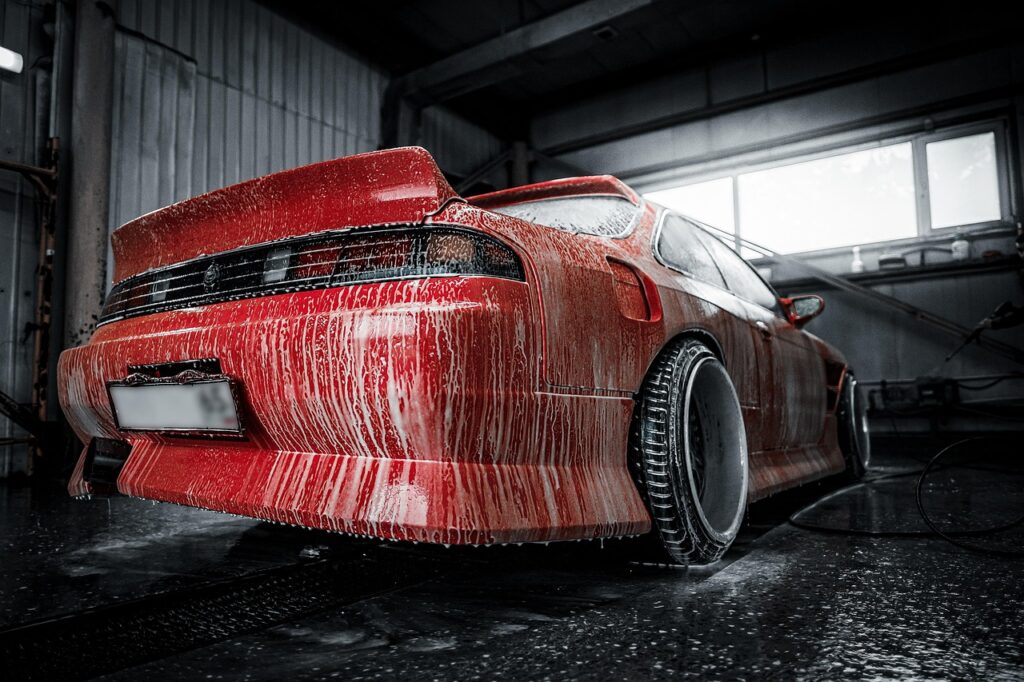
6. **Myth: Using premium fuel is better for all cars.**It’s perhaps one of the most persistent and pervasive myths at the gas pump: that filling your car with premium, high-octane gasoline will automatically lead to better performance, increased fuel efficiency, or a cleaner-running engine, regardless of the vehicle you drive. This misconception, often subtly encouraged by fuel retailers, leads countless drivers to spend extra money on fuel that provides absolutely no benefit to their particular car.
The truth is simple: premium fuel is specifically designed for high-performance engines, typically found in sports cars, luxury vehicles, or those with turbocharged or supercharged engines, which require a higher octane rating to prevent “knocking” or “pre-ignition.” For these cars, using the manufacturer-recommended premium fuel is indeed essential for optimal performance and engine longevity. However, for the vast majority of standard vehicles, which are designed to run perfectly well on regular unleaded gasoline, opting for premium fuel is simply a waste of money.
While some might claim a slight boost in power or a marginal improvement in MPG figures, these effects are generally negligible and certainly not enough to justify the higher cost of premium gas for a car not designed for it. The best course of action is always to consult your car’s owner’s manual. This crucial document will clearly state the recommended octane rating for your vehicle, and often, this information is also conveniently located on a sticker inside the gas cap cover. Unless your car’s manufacturer explicitly recommends premium fuel, sticking to standard gasoline will provide the same performance and protection without the unnecessary financial drain.
Read more about: Unmasking the Speed Demons: A Deep Dive into the 13 Car Models Most Often Ticketed in the U.S.
7. **Myth: You can’t switch back to conventional oil once you’ve swapped to synthetic oil.**The advent of synthetic engine oil brought with it a host of benefits: fewer impurities, generally longer lifespan, superior performance in cold temperatures, and improved engine efficiency by reducing friction between parts. These advantages make synthetic oil a compelling choice for many car owners, despite its typically higher price point compared to conventional oil. However, a persistent and widespread myth has taken root, suggesting that once a vehicle has made the switch to synthetic oil, reverting to conventional oil is somehow impossible or detrimental to the engine.
This notion is exactly what it is—a myth. There is absolutely no reason why you cannot switch back and forth between conventional and synthetic oils if you desire, provided that the oil you are using is suitable for your car’s engine specifications. Drivers might consider switching back for various reasons, perhaps feeling that the benefits of synthetic oil don’t align with their specific driving needs or simply needing to manage their budget more tightly than previously before.
Furthermore, the idea that mixing conventional and synthetic oil as a temporary measure will cause harm to the engine is also largely unfounded. While it’s not advisable as a long-term solution, due to the fact that mixing the two types effectively weakens the unique benefits of both—resulting in an oil blend that’s less effective than pure synthetic but more expensive than pure conventional—it will not immediately damage your engine. The key takeaway is flexibility: modern engine technology and oil formulations allow for fluid transitions between oil types, as long as the chosen oil meets your manufacturer’s specifications. Don’t let this myth restrict your choices in managing your car’s lubrication needs.

8. **Myth: Old, low-mileage car tires are fine to use.**Many drivers assume that a tire’s condition is solely determined by its visible wear or the number of miles it has covered. If a car has been sitting in storage for years, or simply hasn’t been driven much, its tires might still look perfectly fine, with plenty of tread remaining. This often leads to the dangerous misconception that these tires are just as safe and reliable as newer ones, simply because they haven’t seen much action on the road.
However, age is a critical factor for tire safety, regardless of mileage or apparent wear. All tires manufactured after the year 2000 include an identification number on the sidewall, typically preceded by “DOT,” where the last four digits indicate the week and year of manufacture. For instance, a number ending in “1214” signifies a tire made in the 12th week of 2014. Experts like Bridgestone recommend replacing all tires after ten years, even if they show no signs of visible wear or have minimal mileage.
The danger in using older tires lies in the internal structural integrity. Over time, the rubber compounds degrade, and hidden cracks can develop within the tire’s structure. These internal flaws, invisible to the eye, can make the tire more prone to sudden failure, leading to dangerous blowouts or loss of control while driving. This risk is present even if the tire looks pristine on the outside, underscoring the importance of knowing your tire’s age.
Being aware of tire age is especially vital if you’re considering purchasing cheap used tires. While buying used tires can be acceptable from a reputable dealer who inspects and certifies them, suspiciously low-priced options from unscrupulous sellers often hide dangerously aged rubber. Always check the DOT code to determine a tire’s true age before committing, as prioritizing a small saving over safety is never a wise decision for any component connecting your vehicle to the road.

9. **Myth: A jump-started car battery is immediately fully charged.**Experiencing a dead car battery is a common inconvenience, especially for vehicles that aren’t driven frequently. The relief of getting a jump start and having your engine roar back to life often instills a false sense of security that the battery is now fully recovered. Many drivers believe that a brief drive after a jump is all it takes to completely replenish the battery’s charge, making it ready for the next start. Unfortunately, this isn’t always the case.
While your car’s alternator does begin to recharge the battery once the engine is running, the process takes a significant amount of time. A short five or ten-minute drive is rarely sufficient to restore a deeply discharged battery to a functional charge level, let alone full capacity. If the car is jump-started and then quickly turned off, the battery is likely to be too weak to start the car again the next time you try.
For a battery to receive an adequate charge from the alternator, it’s generally advisable to drive the car for at least half an hour after a jump start. This extended period allows the alternator enough time to transfer a meaningful amount of energy back into the battery. However, even a 30-minute drive might not fully recharge a severely depleted battery, especially if it was completely flat to begin with.
In scenarios where a battery has been deeply discharged, or if frequent short trips prevent the alternator from fully charging it, a dedicated battery charger is often the most effective solution for restoring it to full capacity. If, despite driving for a sufficient period, your car still requires another jump start soon after, it’s a strong indicator that the battery itself may be at the end of its lifespan and needs to be replaced. Don’t let the temporary fix of a jump start blind you to underlying battery issues.
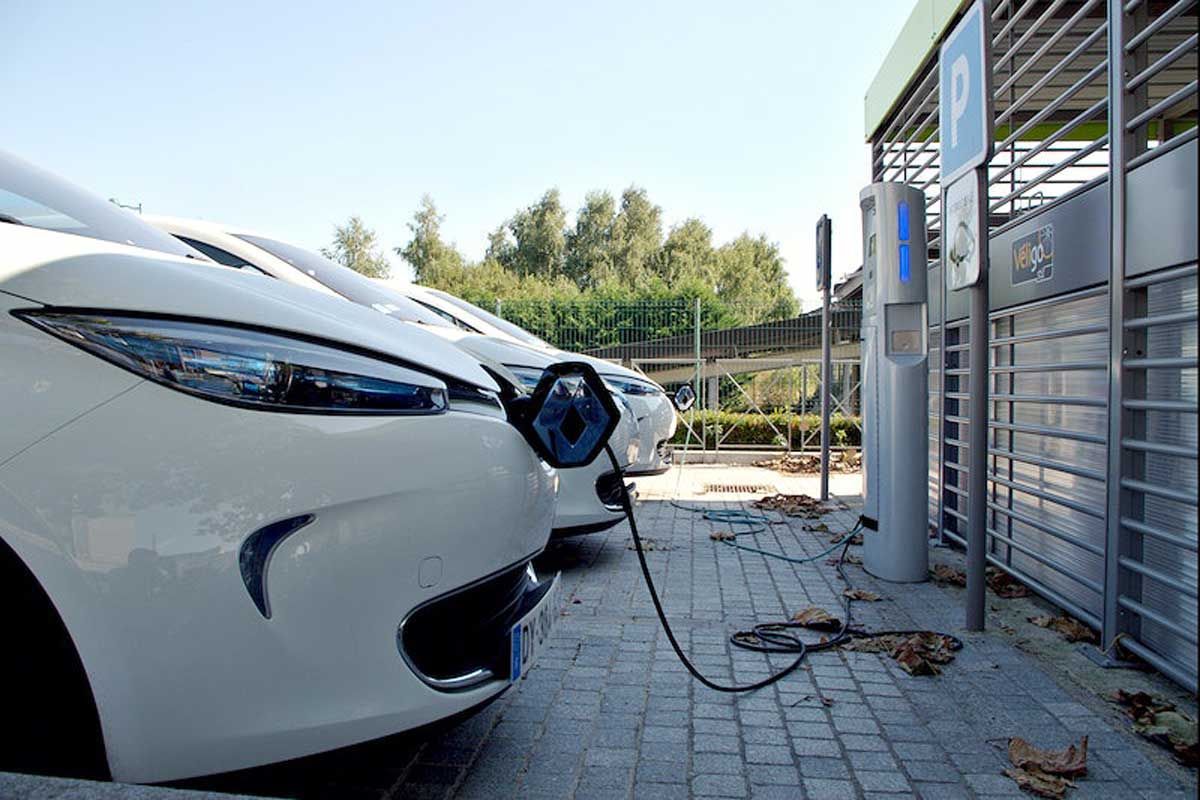
10. **Myth: EVs cost as much to maintain as a combustion car.**As electric vehicles (EVs) become increasingly mainstream, one common concern among prospective buyers revolves around their maintenance costs. There’s a persistent myth that the advanced technology and different components of EVs translate into maintenance expenses comparable to, or even higher than, traditional internal combustion engine (ICE) vehicles. This misconception can deter individuals from making the switch, overlooking a significant financial advantage that EVs often offer.
In reality, the cost of regular maintenance for electric vehicles is generally significantly lower than that for combustion cars. EVs have fewer moving parts, no engine oil to change, no spark plugs to replace, and no complex exhaust systems to maintain. Reports consistently suggest that new electric vehicles are considerably less costly to maintain over their lifespan compared to an equivalent new combustion car, offering substantial savings on routine service appointments.
However, it’s crucial to distinguish between routine maintenance costs and repair costs. While regular upkeep is cheaper for EVs, the data regarding repairs tells a different story for now. InsideEVs, for example, published data indicating that EVs tend to be approximately 30% more expensive to fix when something goes wrong compared to their ICE equivalents. This higher repair cost often stems from specialized components and the evolving expertise required for EV repairs, although this primarily relates to insurance claims rather than out-of-pocket expenses for covered drivers.
For the average EV owner, assuming they are not involved in an accident requiring major repairs, the overall cost of keeping the vehicle on the road remains lower than that of a gasoline-powered car. This makes a strong case for EVs as a financially prudent choice for daily commuting and long-term ownership. To mitigate the higher potential repair costs in the event of an incident, it is strongly advisable for EV owners to opt for comprehensive insurance coverage, ensuring protection against unexpected bills and maximizing the economic benefits of electric driving.
Read more about: The Mythbusters of the Road: 8 Car Reliability & Repair Myths That Could Be Draining Your Wallet
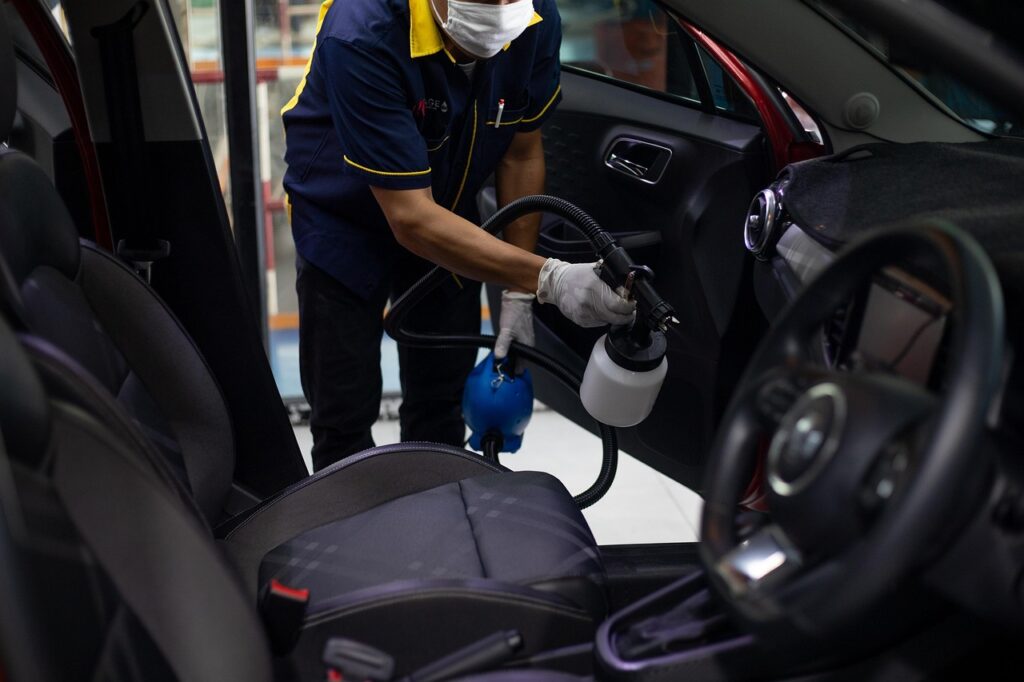
11. **Myth: A car battery lasts for 5 years.**Many car owners operate under the belief that a car battery has a fixed lifespan, often citing a five-year benchmark as the expected duration before replacement. This widespread assumption, perpetuated through various channels, can lead drivers to either delay testing a potentially failing battery or replace a perfectly functional one prematurely. A recent AAA survey revealed that 42% of people believe a car battery consistently lasts for five years, highlighting how deeply ingrained this myth is within public perception.
The truth is that while some batteries might reach the five-year mark, the typical lifespan of a car battery falls within a broader range of three to five years. Crucially, this duration is not a guarantee but an average, heavily influenced by several external factors that can either extend or shorten its functional life. Driving habits play a significant role; frequent short trips where the engine doesn’t run long enough to fully recharge the battery can accelerate its degradation.
Climate also exerts a substantial impact on battery longevity. Extreme temperatures, both hot and cold, are particularly harsh on car batteries. High heat can cause battery fluid to evaporate, leading to internal damage, while cold weather reduces a battery’s cranking power, making it harder to start the vehicle. AAA’s experience underscores this, having responded to 2.1 million battery-related calls during a single summer, with expectations for volumes to increase.
Therefore, relying solely on a calendar date for battery replacement is an unreliable strategy. The most effective way to ascertain your battery’s condition is to have it tested, particularly as it approaches the three-year mark. Many service centers and automotive associations, like AAA, offer free testing of a vehicle’s battery and electrical system, empowering car owners with accurate information to avoid unexpected breakdowns and ensure reliable starting power.
12. **Myth: A car warranty is voided if you go somewhere other than the dealer for service.**One of the most intimidating myths for new car owners, or those with vehicles still under warranty, is the idea that all scheduled maintenance and repairs *must* be performed at an authorized dealership. The fear is that deviating from this path, by choosing an independent mechanic or a different service chain, will automatically void their valuable vehicle warranty. This misconception often steers consumers away from potentially more affordable or convenient service options, costing them extra money and flexibility.
This belief, however, is definitively a myth. Consumer protection laws in many regions, such as the Magnuson-Moss Warranty Act in the United States, prevent manufacturers from voiding a warranty simply because routine maintenance or repairs were performed by an independent facility. You have the right to choose where your vehicle is serviced, whether it’s the dealership, a local mechanic, or a reputable auto repair shop.
The critical caveat, and where diligence is required, is the documentation of any work performed outside of the dealership network. To maintain the validity of your warranty, consumers are always advised to meticulously document all service records. This includes keeping invoices, receipts, and detailed descriptions of the work done, including parts used and dates of service. This documentation serves as proof that your vehicle has been properly maintained according to the manufacturer’s recommendations.
By keeping accurate records, you ensure that you can substantiate proper maintenance in the unlikely event of a warranty claim, regardless of where the work was completed. This empowers you to seek out competitive pricing, convenient locations, or mechanics you personally trust, without the unnecessary worry of compromising your warranty protection. It’s about being informed and organized, not being tethered to the dealership for every single service.
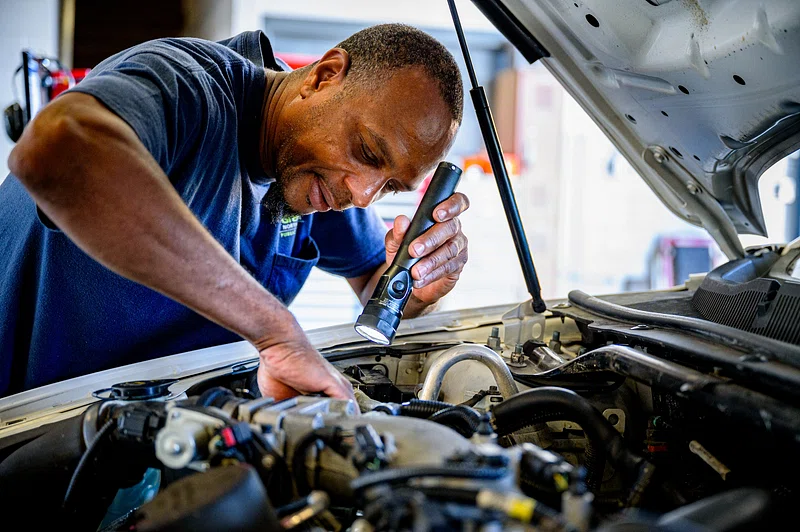
13. **Myth: Brake fluid doesn’t need to be changed.**Among the various fluids in your car, brake fluid is often overlooked when it comes to routine maintenance. Many drivers, and even some less informed mechanics, hold the belief that brake fluid is a “fill-and-forget” component, assuming it never needs to be changed unless there’s a visible leak or a major repair. This dangerous myth underestimates the crucial role brake fluid plays in your vehicle’s most vital safety system and the unseen degradation it undergoes over time.
The reality is that brake fluid is hygroscopic, meaning it readily attracts and absorbs moisture from the air, even through the brake lines and reservoir cap. Over time, this absorbed water content significantly reduces the fluid’s boiling point. When brakes are applied vigorously, especially during demanding driving or in hot conditions, the heat generated can cause the water in the brake fluid to boil, creating vapor bubbles within the hydraulic system. Since vapor is compressible, this leads to a spongy pedal feel, reduced braking efficiency, and in severe cases, complete brake failure, a phenomenon known as “brake fade.”
Beyond performance issues, water in the brake fluid can also lead to corrosion of internal brake system components, including calipers, wheel cylinders, and ABS modules. These parts are expensive to replace, and the damage caused by neglected fluid changes can far outweigh the cost of preventive maintenance. Most manufacturers, recognizing these risks, explicitly recommend replacing brake fluid at regular intervals, typically every two to three years.
Ignoring the manufacturer’s schedule for brake fluid replacement is a gamble with your vehicle’s safety and your wallet. This simple, relatively inexpensive service is critical for preventing corrosion, maintaining optimal braking performance, and extending the life of your entire braking system. Don’t wait for a warning sign; proactive brake fluid changes are a fundamental aspect of responsible vehicle ownership, ensuring your brakes are always ready when you need them most.
14. **Myth: Tires shouldn’t be replaced until the tread reaches 2/32”.**For many years, the industry standard and common advice for tire replacement has centered around the 2/32-inch tread depth mark. This figure, often indicated by wear bars molded into the tire treads, represents the absolute legal minimum tread depth in many jurisdictions. Consequently, a widespread myth persists that tires are perfectly safe and effective right up until their tread is worn down to this critical threshold, especially in dry weather conditions.
The truth, however, paints a much clearer picture about safety. While 2/32” might be the legal limit, research by organizations like AAA has demonstrated that tire performance, particularly in wet weather, deteriorates significantly long before reaching that point. Their studies found a substantial decrease in braking capability and traction once tread depth falls to 4/32 inches. This critical difference in performance can be the deciding factor in avoiding an accident.
Your tires are the singular point of contact between your vehicle and the road, making their condition paramount for overall safety. Tires with tread worn past 4/32” require considerably longer stopping distances, especially on wet or slippery surfaces. This extended stopping time, coupled with reduced grip, places drivers at an unnecessary and heightened risk for a crash, even in conditions that appear to be mild or routine.
Therefore, adopting a proactive approach to tire replacement, based on expert recommendations rather than just legal minimums, is essential. AAA, for instance, strongly advises consumers to consider buying new tires once their tread reaches 4/32 inches. This ensures that your vehicle retains optimal handling, braking performance, and provides the necessary safety margins in diverse driving conditions. Don’t compromise your safety by pushing your tires to the absolute limit; an informed replacement schedule is a cornerstone of smart car maintenance.
Understanding these pervasive myths is the first step toward becoming a more informed and empowered car owner. By separating fact from fiction, embracing the guidance found in your owner’s manual, and recognizing the expertise of reputable professionals, you can navigate the complexities of vehicle maintenance with confidence. This practical knowledge won’t just keep your car running smoothly; it will safeguard your wallet and, most importantly, your peace of mind on every journey.

